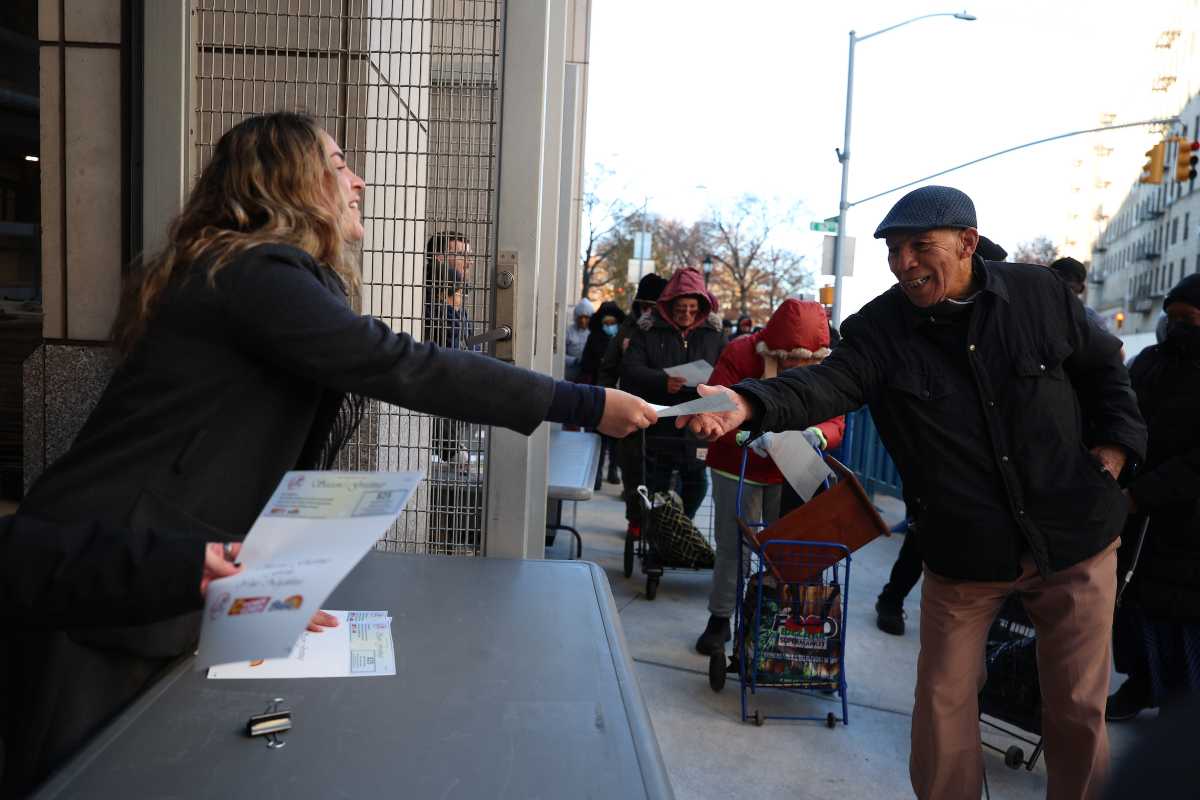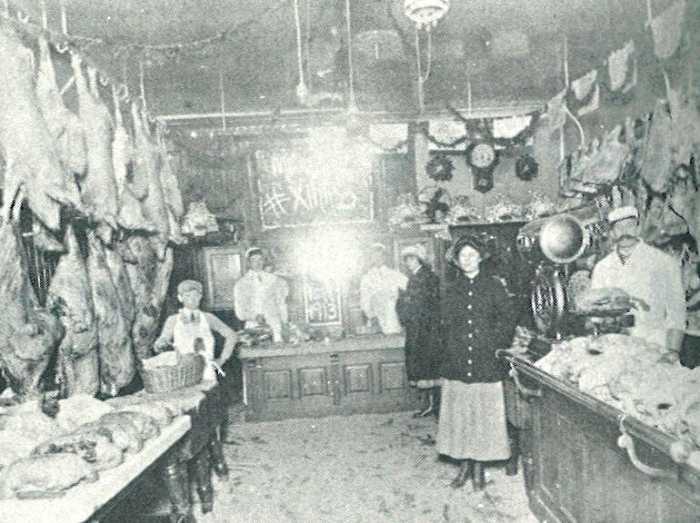BY Albert Amateau
A neighborhood health center with a free-standing emergency department could open in St. Vincent’s Hospital’s O’Toole building as early as 2013. It is part of a proposal that would include the residential redevelopment of the old St. Vincent’s campus with a total of 300 luxury condos.
The plan was announced Thursday, March 10 by the bankrupt St. Vincent’s in partnership with North Shore/Long Island Jewish Health System, which would own and operate the O’Toole health center/emergency room, and the Rudin Organization, which would build the residential complex, including a new 200-ft.-tall residential tower, five new row houses and the residential conversion of four old St. Vincent’s buildings.
But the plan must first receive approval from creditors at an April 7 hearing in the St. Vincent’s bankruptcy case. In addition, Rudin must secure complex zoning changes for the redevelopment even though the residential plan won the approval of the city Landmarks Preservation Commission in July 2009.
Moreover, the Landmarks Preservation Commission must also approve any reconstruction that affects the exterior of the O’Toole building, according to a spokesperson for North Shore/L.I.J.
St. Vincent’s went into bankruptcy in April 2010 — for the second time in three years — and closed its doors, ending is 161-year history in the Village since its 1849 founding by the Sisters of Charity. St. Vincent’s debt is estimated at $1 billion.
In 2008, St. Vincent’s joined Rudin in proposing a new state-of-the-art hospital to replace the O’Toole building on the west side of Seventh Avenue while Rudin agreed to acquire the old campus on the east side of the avenue for its residential development. But the bankruptcy put an end to the new hospital and left the residential development in limbo.
Last week’s proposal calls for Rudin to pay $260 million for the old campus while St. Vincent’s transfers O’Toole to North Shore/L.I.J., which will spend $110 million to renovate the six-story, 160,000-sq.-ft. O’Toole for the proposed new center. Rudin has also agreed to pay $10 million to North Shore/L.I.J. to help the renovation of O’Toole.
While the new plan was announced as an attempt to return the health care that was lost with the closing of St. Vincent’s, neighborhood groups that have been demanding a full service hospital were skeptical and charged at a wild March 11 meeting that the proposal does not respond to community health needs.
Andrew Berman, director of the Greenwich Village Society for Historic Preservation, said this week, "The last plan by St. Vincent’s and Rudin was a tragic and unmitigated disaster, largely because the financials were a fantasy which public officials accepted as reality even as members of the public, including GVSHP, regularly called them into question. I sincerely hope that any new plan will undergo more rigorous scrutiny, which must start with the ULURP process. Although the Landmarks Preservation Commission approved the design of the Rudin condo plan, it cannot move ahead unless it gets a large raft of zoning changes and approvals, which should examine whether or not the size of the proposed developments and their impact upon the neighborhood are appropriate. As we don’t yet have all the details on that plan, we look forward to vigorously engaging the public approval process, and encouraging the public to do the same."
Elected Officials last week focused on the proposed emergency department in the O’Toole building. They sent a letter to St. Vincent’s, North Shore/L.I.J. and Rudin with a list of 12 questions that ended with the statement, “We have stated that our first priority is for a full service hospital and emergency room to replace St. Vincent’s. What led you to this proposal instead of a state-of-the-art full service hospital.”
The officials including Council Speaker Christine Quinn, NY State Senator Tom Duane, Assemblymembers Deborah Glick and Richard Gottfried along with Manhattan Borough President Scott Stringer and Congressmember Jerrold Nadler, also asked how many emergency department patients could be served in the new O’Toole’s center compared to the numbers served by St. Vincent’s emergency room.
The officials were concerned that “underserved and uninsured” patients be served at the emergency department with a single standard of care regardless of ability to pay.
Terry Lynman, spokesperson for North Shore/L.I.J. said on Monday that the O’Toole center’s emergency department would not be a full service trauma center but would have the medical staff and equipment to stabilize patients and would have a holding area for patients who need to be transported to a higher level of care.
The emergency department would be comparable to the emergency room of New York Downtown Hospital on Beekman Street but would have no in-patient beds.
“We’ll meet with the different ambulance services and EMS providers and tell them what kinds of patients they should and shouldn’t bring,” Lynman said. Ambulances would not bring critical gunshot wounds, major compound fractures, patients with symptoms of stroke or cardiac arrest or women in labor, he said. “If someone comes in with their father or mother with stroke symptoms, we’d be able to treat them,” he said. The only ambulance in the center would be used to move patients to a higher level of care, he added.
The center, however, will have a full service imaging center and special surgery capacity to focus on intervention treatment for the sick and elderly, according to the plan and will be open 24/7.
North Shore/L.I.J. opened a small Urgent Care center in partnership with Village Care in the Village Care clinic on West 20th Street last week. That center, with services similar to the proposed O’Toole’s center, will remain in operation.
However Brad Hoylman, head of Community Board 2’s St. Vincent’s Omnibus Committee, said in an email this week, “We have made it clear that we don’t want a glorified urgent care center … What will happen to the clinics currently in the O’Toole building, including the HIV clinic? We are only at the beginning of a very important public process, which includes the land use approvals for the Rudin development.”
Jo Hamilton, chairperson of Community Board 2 had similar concerns. “We look forward to better understanding how a stand alone emergency room could work and what other services will be included in the O’Toole building,” she said.
Yetta Kurland, a founder of the Coalition for a New Village Hospital, said the proposal is being presented as a done deal dictated by St. Vincent’s bankruptcy. “It isn’t a done deal,” she said. There are still questions about whether the project can move forward with the Rudin plan to demolish the Coleman building on the east side of the Seventh Avenue, Kurland insisted. “We heard an engineering expert speak recently about being able to put a full service hospital in the Coleman building for $250 million,” she added.
However, Bill Rudin, head of the development organization, said the residential project would generate more than 1,100 construction jobs. The 24/7 comprehensive care center would employ more than 300 people. Moreover, Rudin said he would build a public park on the triangle on the west side of Seventh Avenue across 12th Street from the O’Toole building, in consultation with community groups.
In 2009, Rudin provided a financial guarantee that would allow the School Construction Authority to build a 564-seat public elementary school on the first four floors of the Foundling Hospital on Sixth Avenue and 17th Street.
According to bankruptcy court papers quoted in Crain’s New York Business article, the deal in its current form is not conditional on zoning and permit approvals for the residential project on the east side of Seventh Ave. Nor is it dependant on state Health Department approvals for the North Shore/L.I.J. health center and emergency department in the O’Toole building.
“The significance of this component cannot be minimized as a very limited amount of developers would be willing to entertain such a condition-free transaction without a significant discount to price,” according to the bankruptcy document.
In 2007 before the bankruptcy and when real estate values were still high, a memorandum of agreement called for Rudin to buy the old hospital campus for about $340 million in a deal that was contingent on various approvals.































